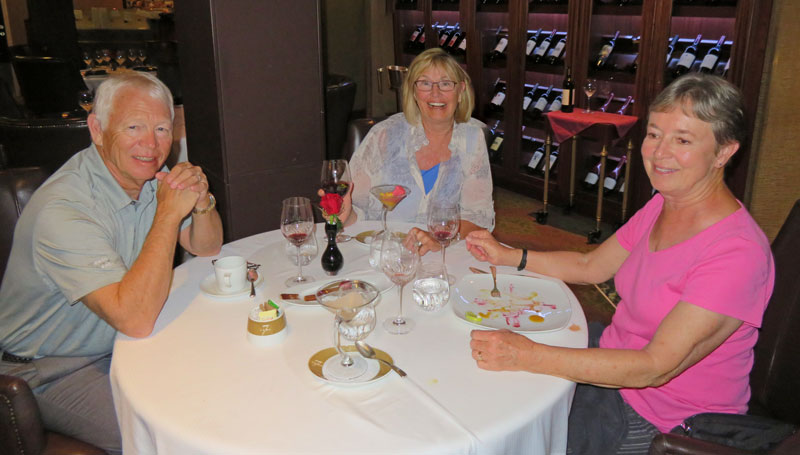
Machu Picchu, Cruise around Cape Horn, and Iguassu Falls
Mike and Judy Henderson
January 31 to March 1, 2017
I'm going to leave the map at the beginning of each page to help you visualize where we are.

+++++++++++++++++++++++++++++++++++++++++++++++++++++
2/24/2017 (Friday) Today, we arrived at Buenos Aires, the end of the cruise. It's the largest city in Argentina.
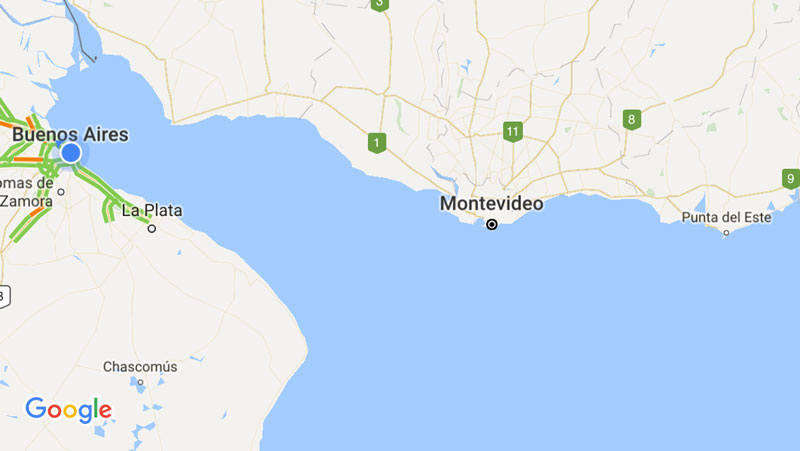
Here's the city in the morning.
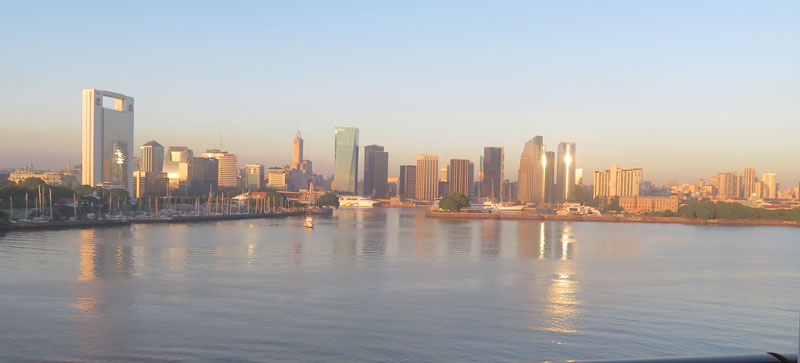
We took a city tour. Here's the "British Tower". It was a gift from the British residents of Argentina to the country in about 1910. As you may remember, Argentina and Britain fought the Falkland War back in 1982 and that created ill will towards the British - so the tower was renamed the Memorial Tower.
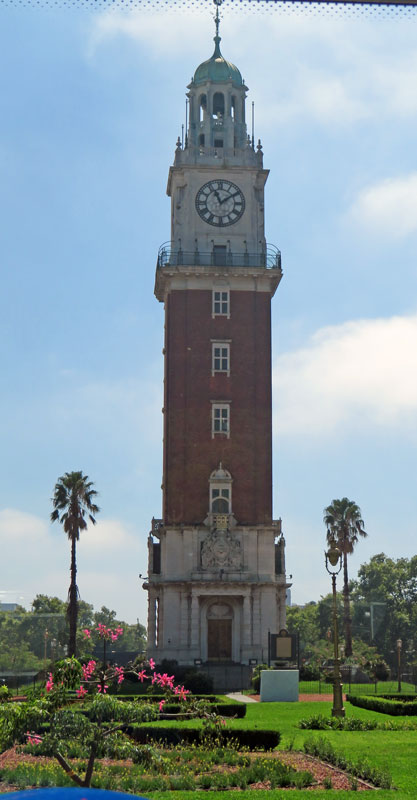
Next, we drove along the 9th of July Avenue to the Obelisk in the Plaza de la Republica.
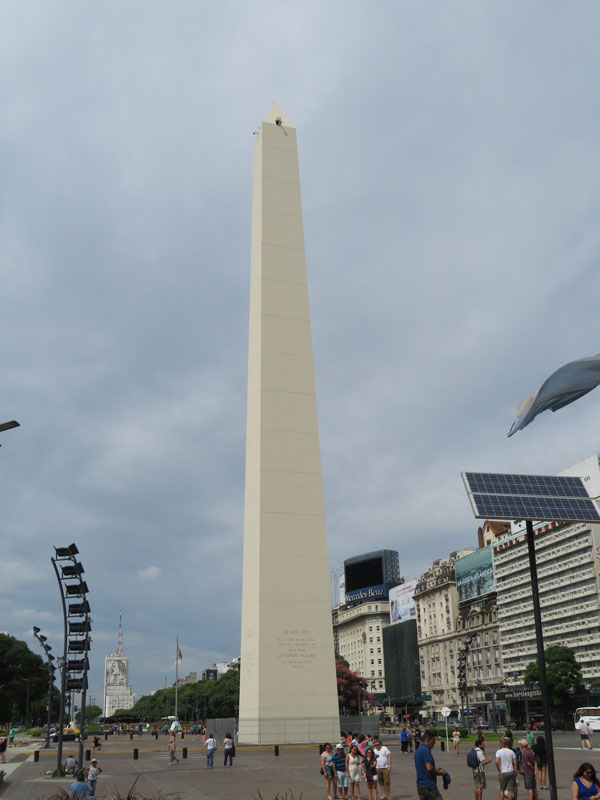
If you look closely at the picture above, you'll see a figure on the building at the end of the Avenue. That's Evita.
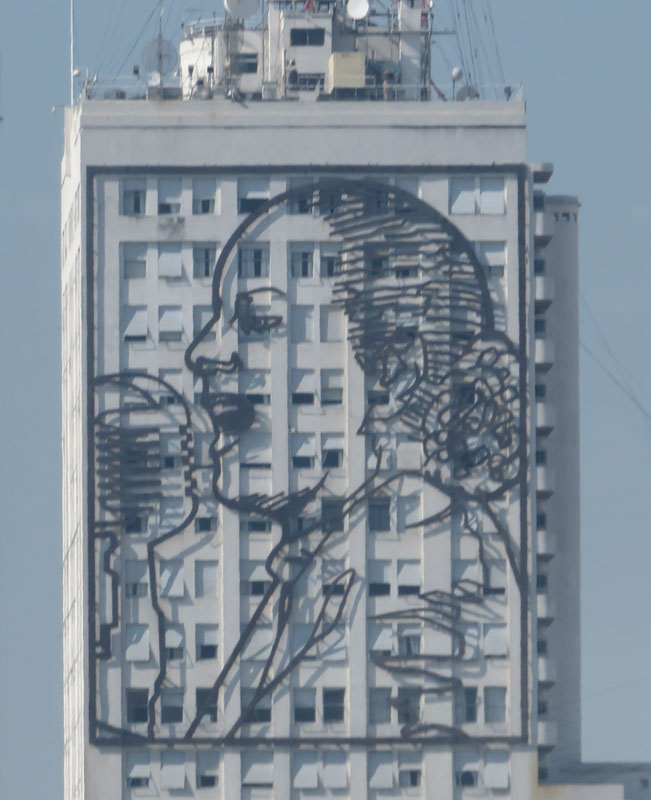
And to go back to the 9th of July Avenue, it's a very wide avenue, seven lanes wide in each direction, plus a two way street on both sides, for a total of sixteen lanes of traffic. If you count the two sides streets as two lanes each, it's 18 lanes of traffic. The center lanes are for buses only, to help people cope with the enormous traffic problems.
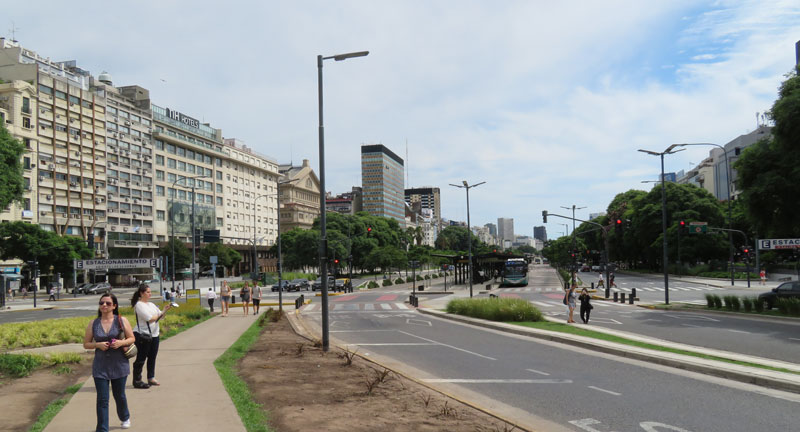
Then we drove by the Presidential Palace, called "The Pink Palace". This is essentially the executive mansion. Evita gave a famous address to the crowd from one of the balconies.
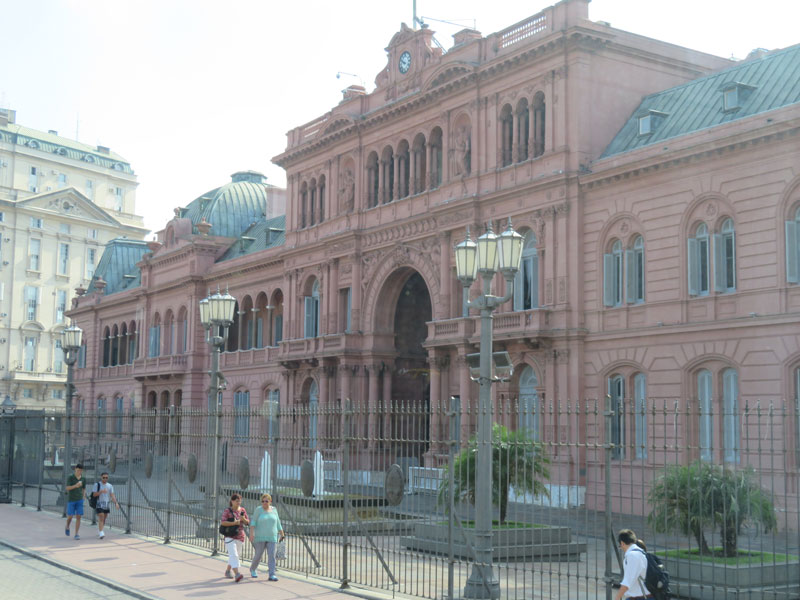
Then we drove to La Boca, the Italian district of Buenos Aires.
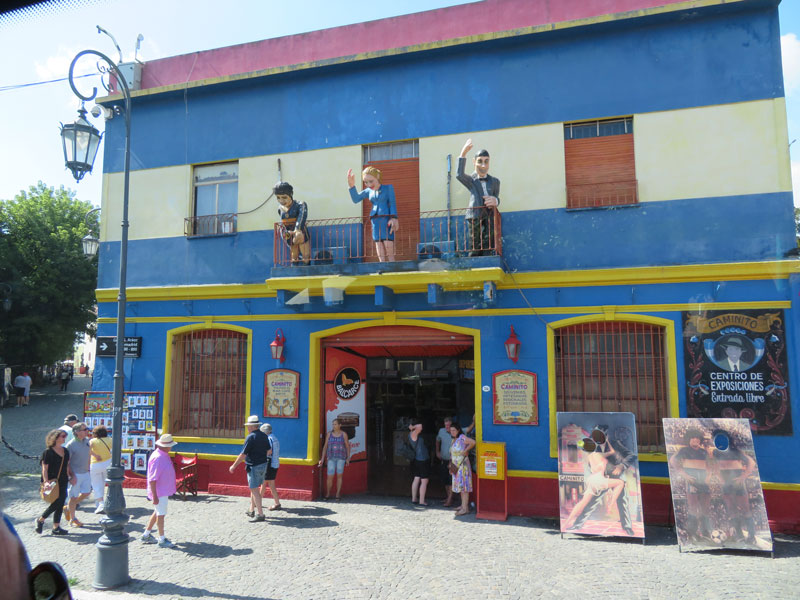
This was, and maybe still is, a poor district of Buenos Aires. The early settlers scrounged corrugated iron from shipping boxes to build their homes. This one is in pretty good condition and painted many colors.
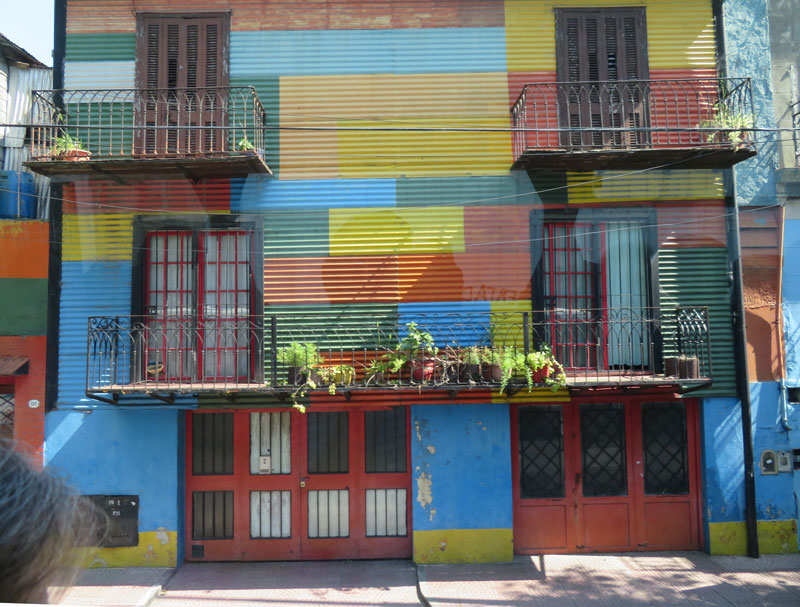
Buenos Aires has a lot of poverty. Here, squatters have built houses under a freeway. They do not have permission or ownership so eventually they'll probably lose their homes.
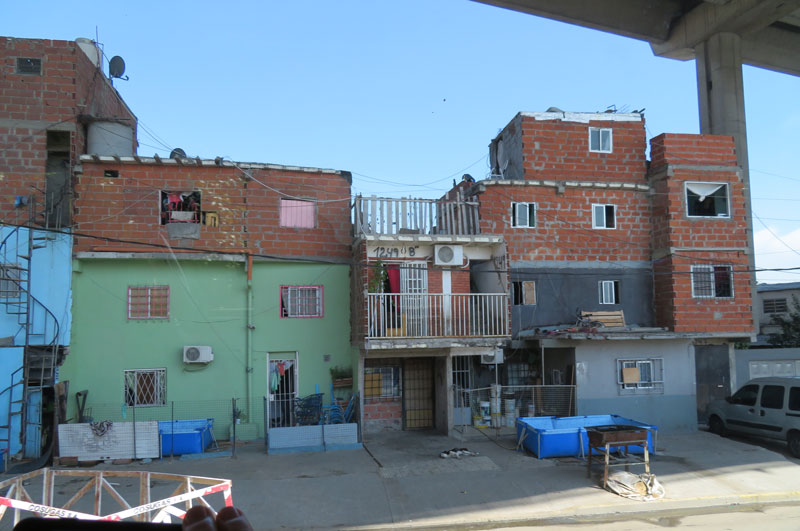
Next we went to La Recoleta Cemetery, where Evita is buried. As you can see from the pictures below, it's a city of the dead. The crypts are for a family and many burials occur in each tomb. This is similar to the practice in New Orleans, where I'm from.
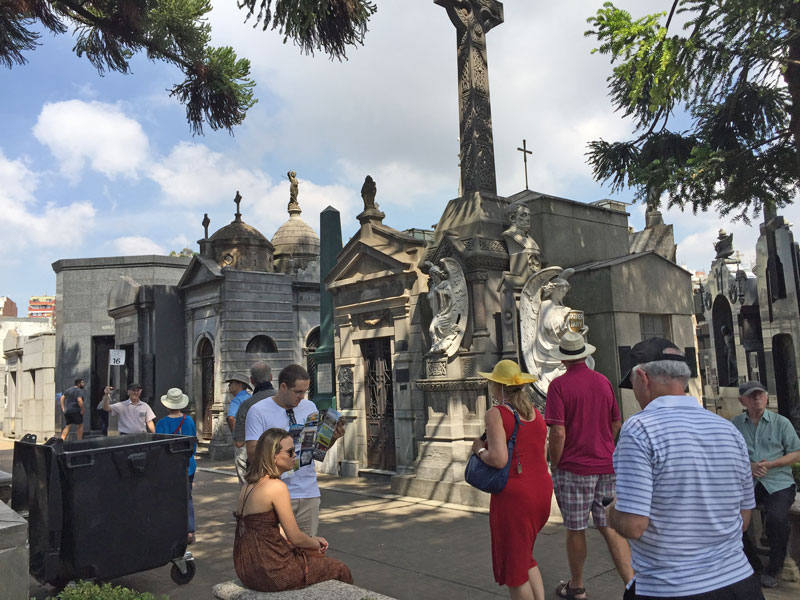 ,
,
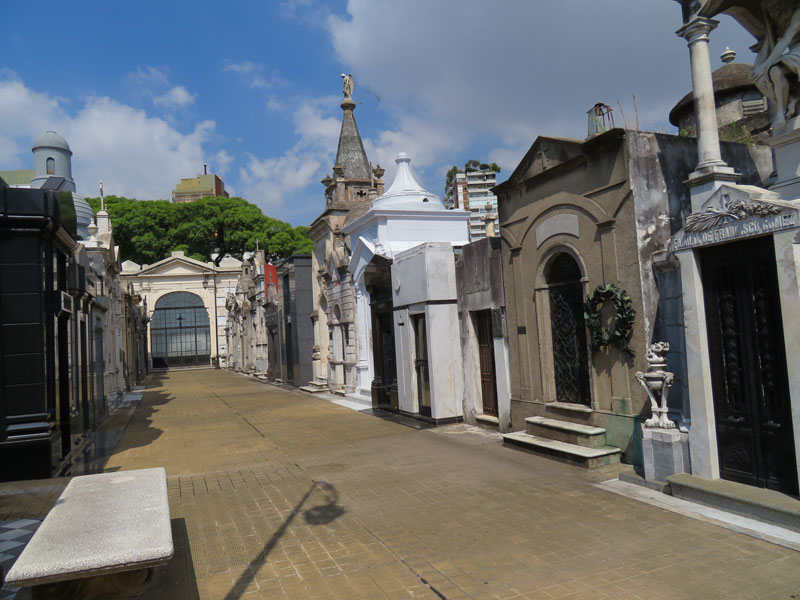
Here are some pictures of Evita's tomb. Her family name was Duarte and she's buried in her family crypt, not in her husband's crypt (Juan Peron).
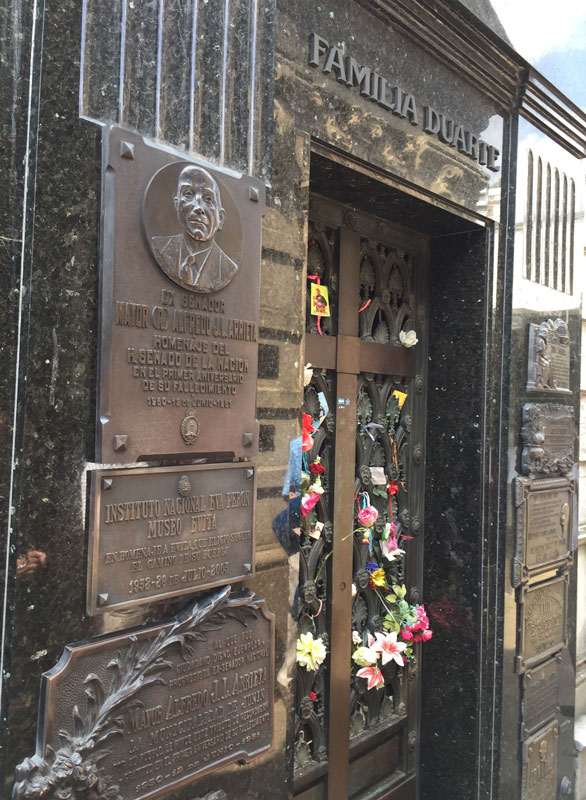
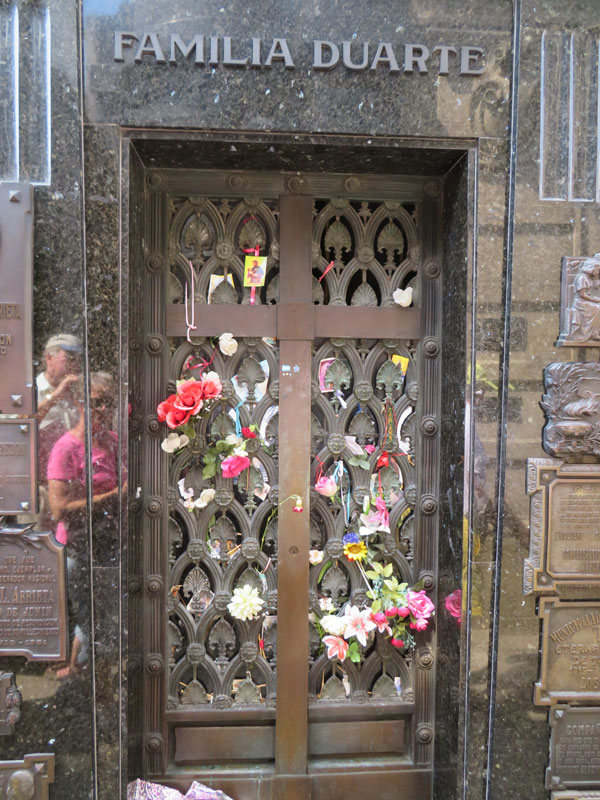
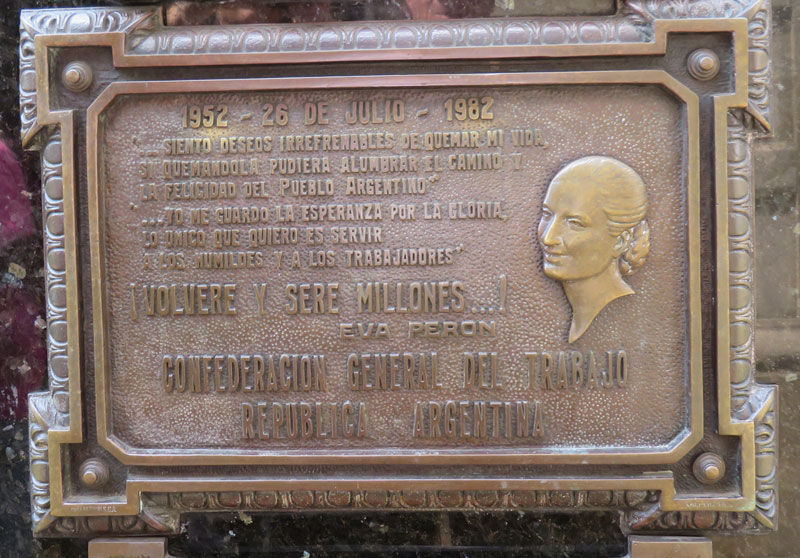
As we were walking out, we saw this statue of a young girl with her dog. Many people have stroked the dog's muzzle.
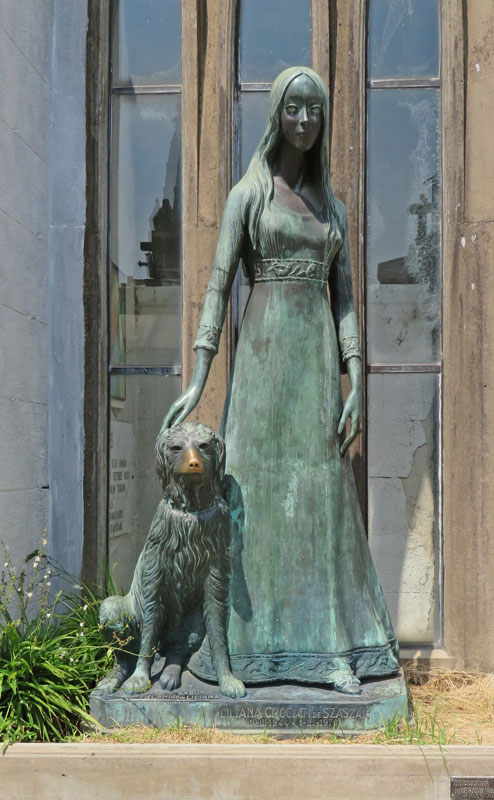
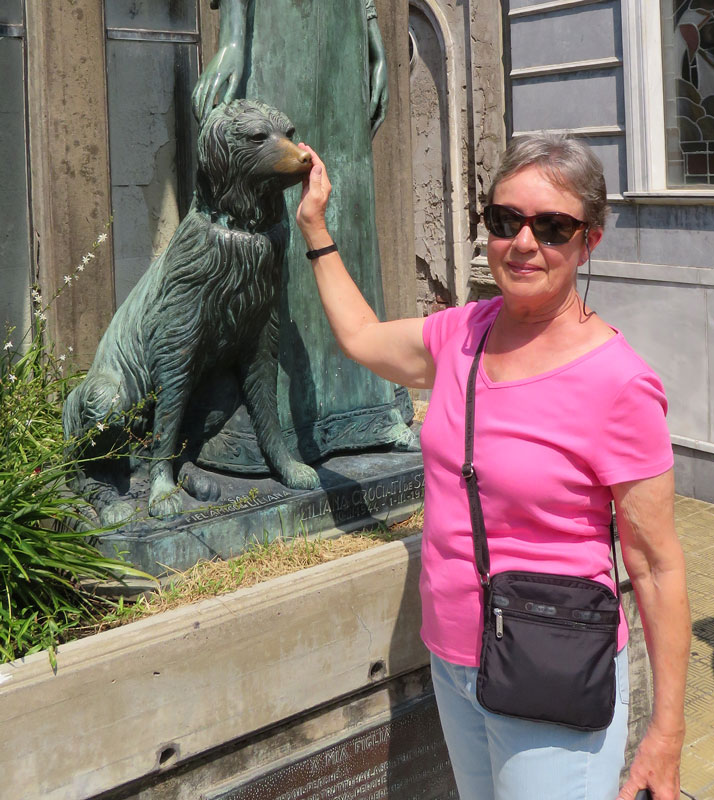
After we left the cemetery, we passed the Floralis Generica, a mechanical flower that opens and closes with the sun. However, on the day we passed, it was not working and is in the closed position.
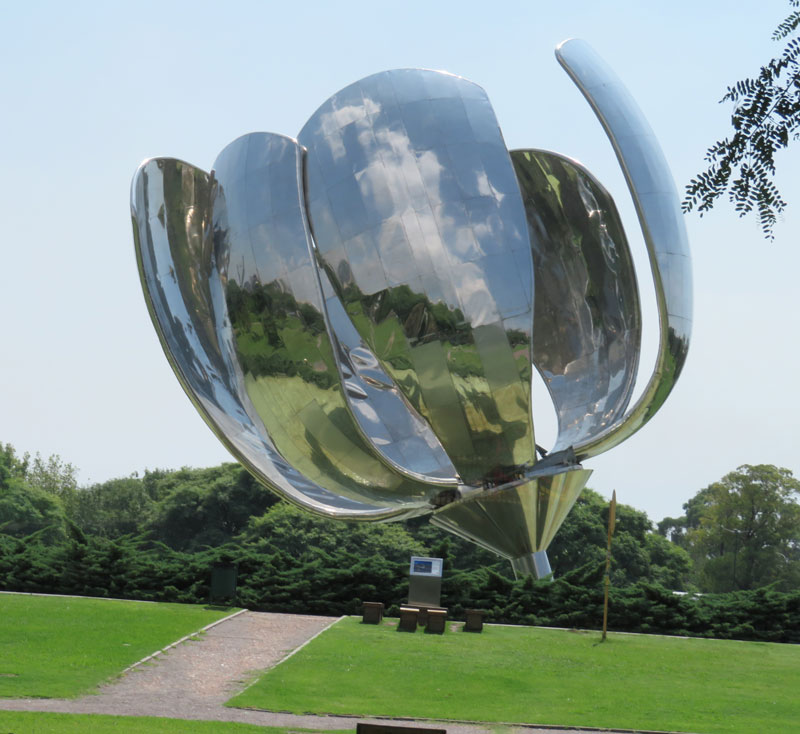
Then we went to the docks to take a boat tour of the river delta.
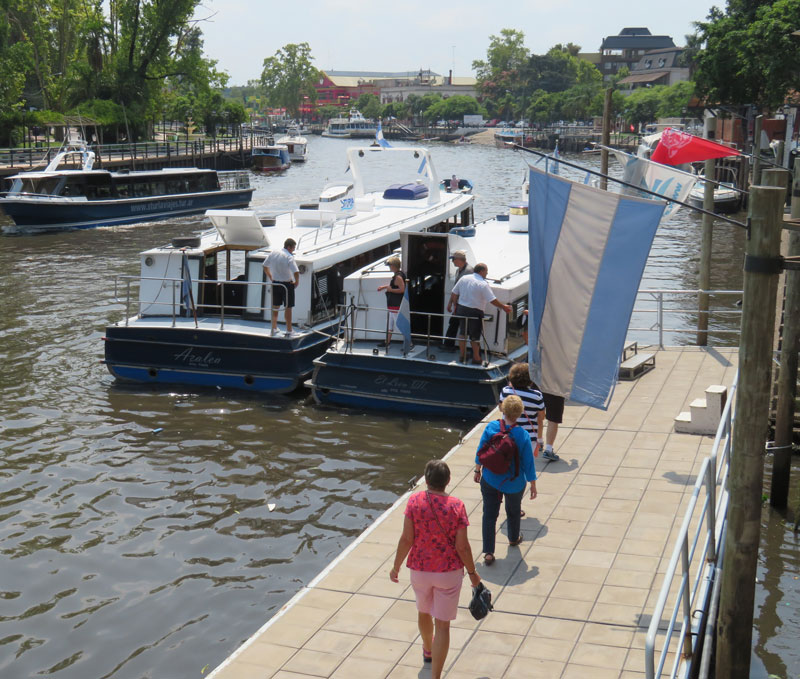
Here's what the boat looks like from the side.
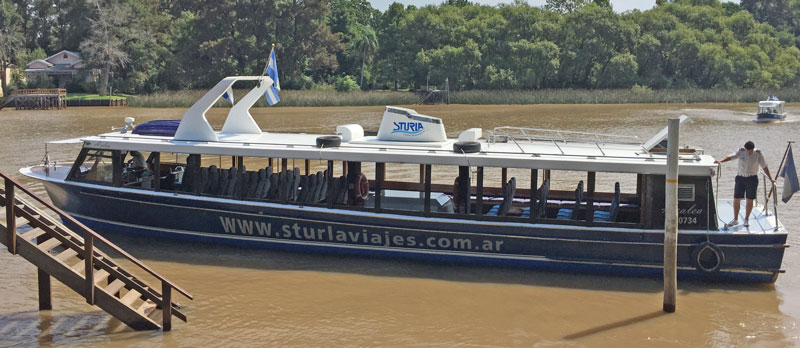
People live on the islands in the delta with only boat access. There are no roads. The homes are pretty nice, however.
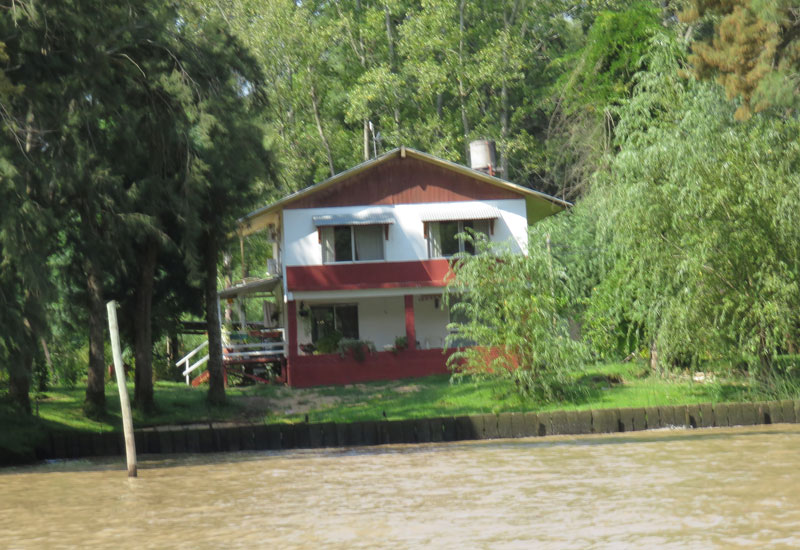
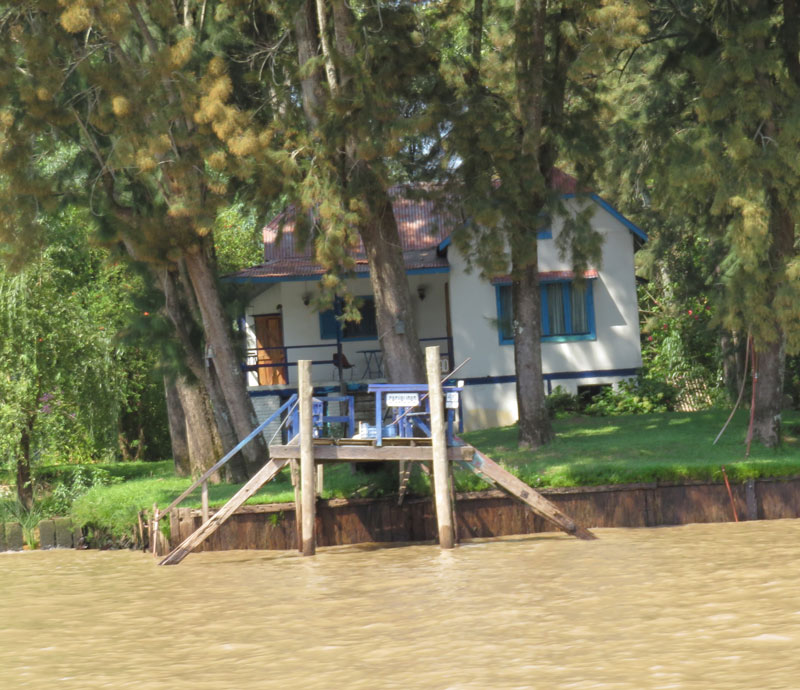
We eventually arrived at the Gato Blanco Restaurant.
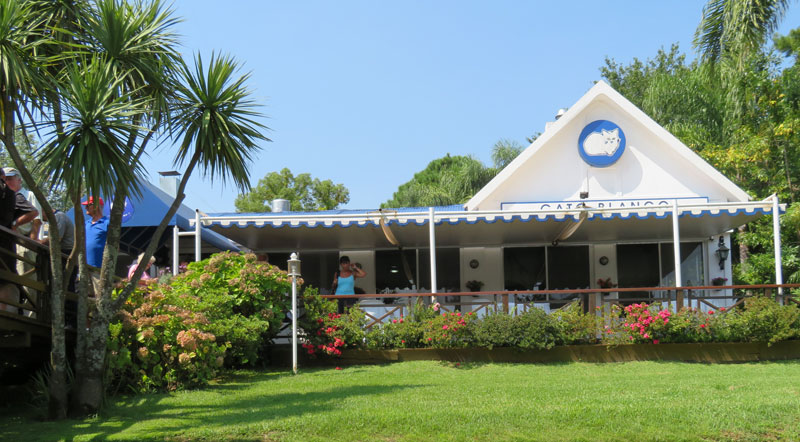
The gato blanco was there to welcome us.
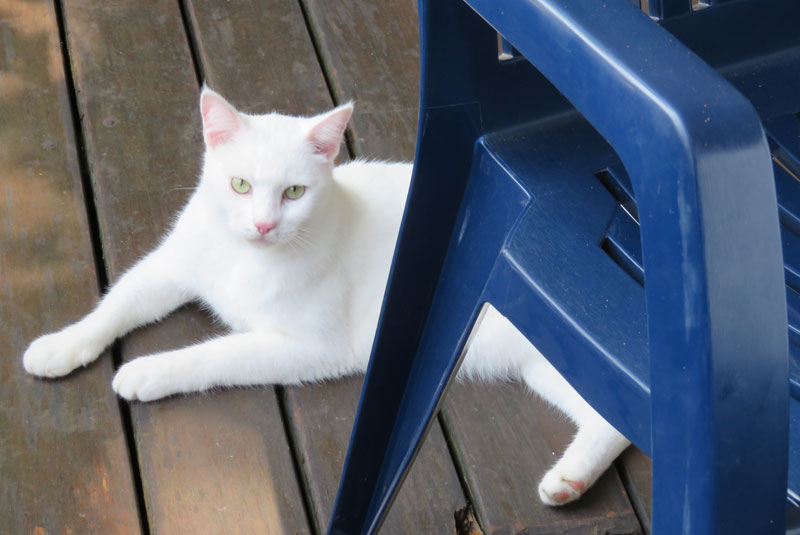
We had a very nice lunch, consisting of salad, steak, and dessert. Here I am in the restaurant.
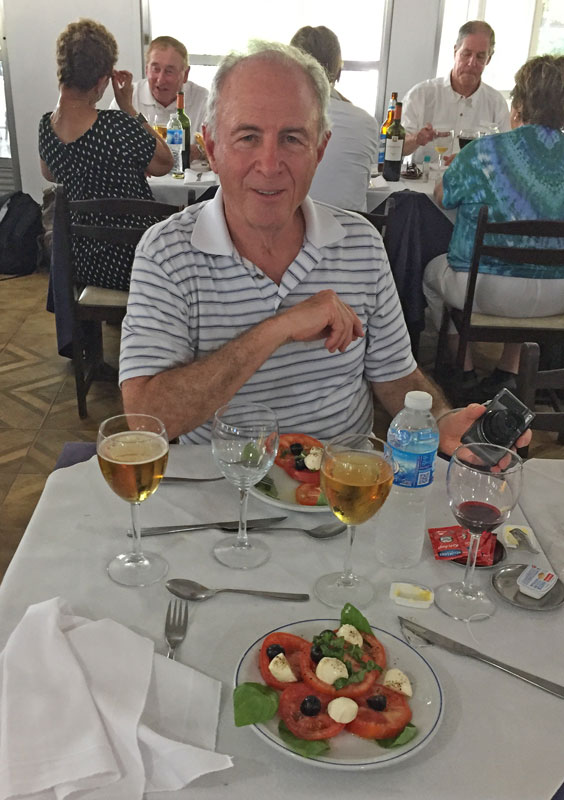
The guys in the kitchen were grilling the steaks over hot coals.
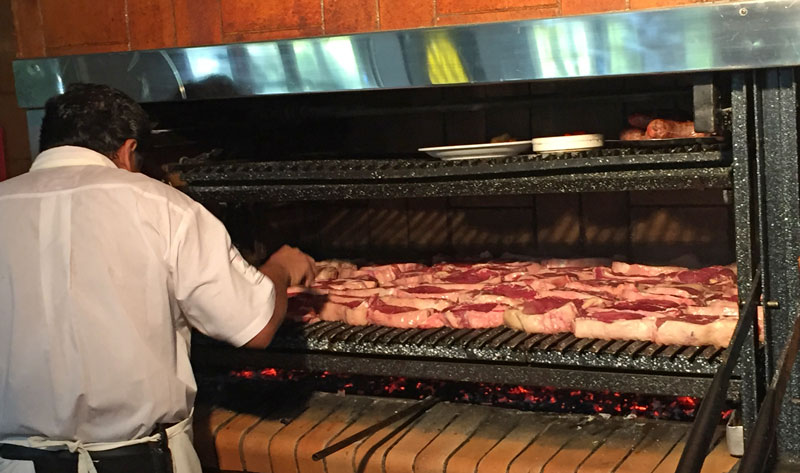
After lunch the boat returned for us and we rejoined the bus. The final stop on our tour was at San Isidro Cathedral.
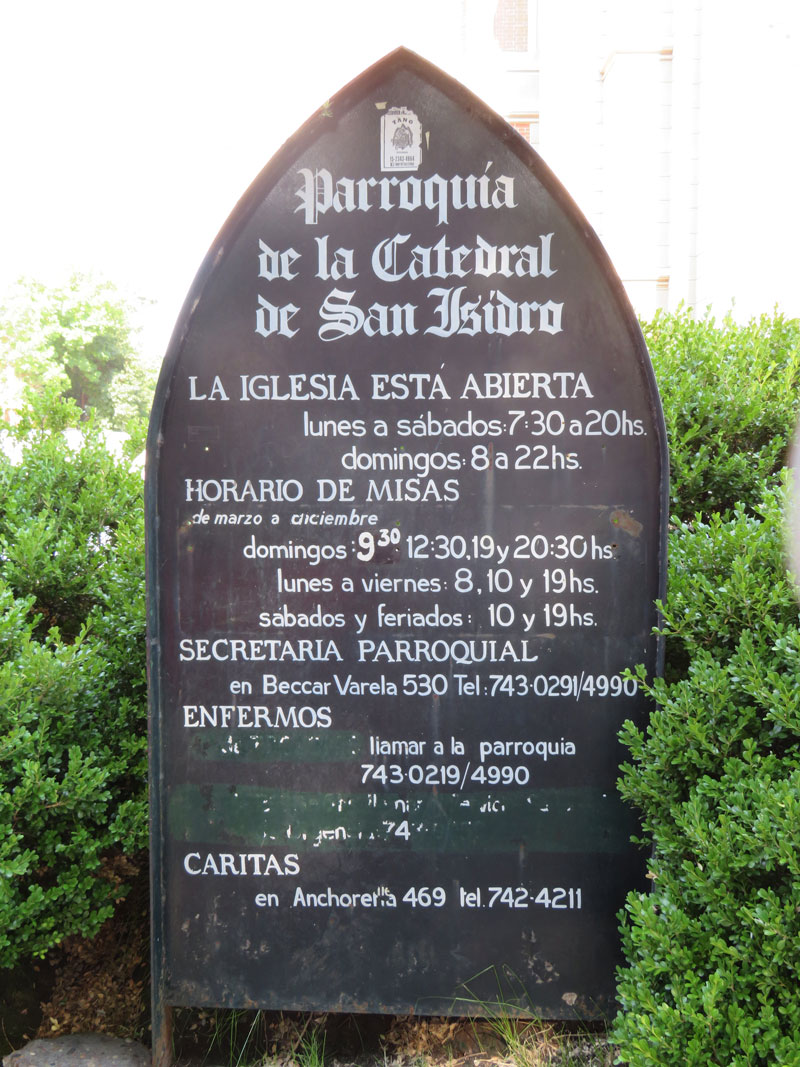
Although we went in, I didn't take any pictures of the inside.
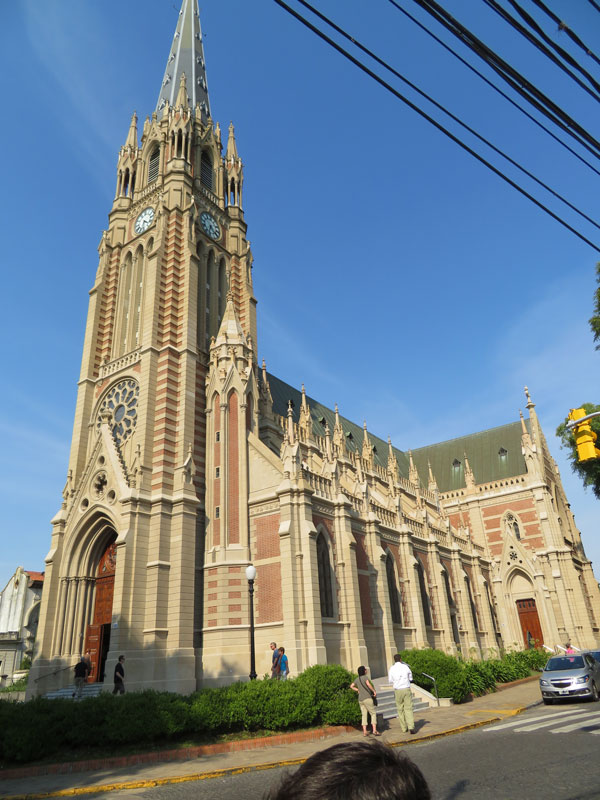
Then it was back to the ship. We had dinner that night with our friends Ken and Sue. Ken was able to talk our way into the Prime 7 Restaurant on board. It was a wonderful "final meal" together.
